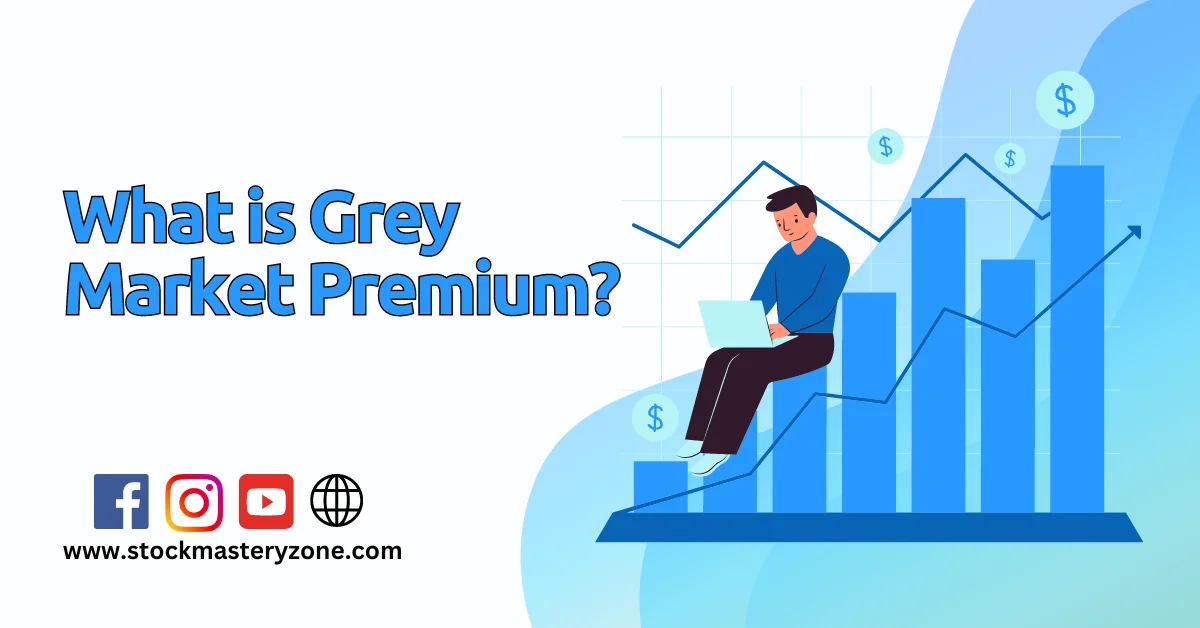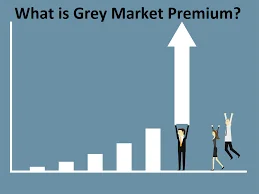A given IPO’s market sentiment is indicated by the grey market premium based on supply and demand dynamics. A high GMP indicates strong demand and possible upside in the stock upon listing.

Table of Contents
What is Grey Market?
For many years, traders and investors in India have used grey markets as a parallel stock market to confirm their legitimacy.
Let’s examine the definition and operation of the grey market.
Open a Free Demat Account on Zerodha and use Sensibull and Streak for Free
What is Grey Market and How Does it Work?
Unofficial stock and application markets are known as “grey markets,” sometimes known as “parallel markets.”
Before the shares are formally released for trading on the stock exchange, investors trade for shares or applications in this market. In India, trading in grey market stocks is done in person and with cash.
This transaction is not supported by any outside companies, including stock exchanges or SEBI. The two well-known terms in the Grey Market for Initial Public Offerings (IPOs) are Kostak and Grey Market Premium.
What are Kostak Rates?
The amount an individual must pay for an IPO application prior to the IPO listing is known as the Kostak rate. On Kostak rates, one can fix their profit by buying and selling their entire IPO application outside of the market. In all cases where you receive an allotment, the Kostak rates are applicable.
For example, if someone submitted five applications for an initial public offering (IPO) and sold them for Rs. 2,500 each, they were able to secure an IPO profit of Rs. 12,500. He will still make the same amount of money even if he receives the allocation in two applications. Additionally, if he or she sells the stock for which they earned a profit of about $25,000, they must give the remaining profit to the person who purchased the application.

Understanding India’s Grey Market
Before the shares are listed, traders and retail investors purchase them on grey markets, which simulate a supply and demand scenario.
The grey market provides an escape route for anyone wishing to withdraw from the IPO for any reason. Even if they miss the deadline, individuals can still purchase IPO shares.
Before going public, a business can trade its stocks and applications on the black market. These markets also give underwriters a chance to comprehend the company’s trajectory following listing.
Also Read: DOMS Industries IPO Review, Analysis, Price, Date, GMP
What is Grey Market Premium?
The grey market premium is the price at which IPO shares are traded on the grey market. The stock of the company that will be listed on the initial public offering (IPO) is purchased and sold off-market. The way the IPO will respond on the day of listing is reflected in the live grey market premium.
Here’s an illustration:
Assume for the moment that Stock Y has an issue price of Rs. 100. The premium on the grey market is 300 rupees. This indicates that investors are prepared to pay Rs. 400 (100+300) for Company Y shares.
Note: An IPO’s grey market premium is contingent upon demand.

What is the Gray Market IPO Listing?
Before initial public offerings (IPOs) are formally introduced for trading on a stock exchange, people purchase and sell IPO shares on the grey market. Since it’s an unofficial over-the-counter market, there are no regulations in place. Each and every transaction is done one-on-one with cash. The Stock Exchange, brokers, or SEBI are not the third parties endorsing or supporting this deal. Grey market trade is carried out by a small number of people because there is no official platform or set of regulations. In the IPO grey market, the terms “Kostak” and “Grey Market Premium” are frequently used.
Also Read: Tata Technologies IPO
What is the Grey Market Trading Process for IPO Shares?
The following procedures are involved in trading IPO shares on the grey market:
Through the IPO, investors submit applications for shares. Because the shares may occasionally be allocated below the issue price, there is a complete financial risk. These are the people who are called sellers.
For some people, shares are worth more than what they were originally issued for. Before the shares are distributed through the IPO allotment process, they are gathered. These are the people who are known as buyers.
Buyers use grey market dealers to place orders at a premium in order to purchase IPO shares. The seller who had applied for an IPO is then contacted by the dealer, who requests that they sell their IPO stocks at a premium on the grey market.
The sellers can sell the IPO shares to the grey market dealer for a set price if they don’t want to take on the risk of listing on the stock market. Once the dealer receives the application details, he notifies the buyer about the shares he has purchased.
The seller has the option to transfer the shares to the buyer’s Demat account or sell them at a specific price if they are allocated to them. If the seller is not allotted any shares, the deal will automatically end.
People Also Read:
Types of Trading in the Stock Market
8 Bullish Candlestick Patterns: The Ultimate Guide 2023
8 Important Bearish Candlestick Patterns Every Trader Should Know
FAQ
Q1. How does the grey market premium work?
The price that investors are willing to pay in the grey market above the initial public offering (IPO) price prior to the stock being listed on the exchange is known as the “grey market premium.” On the basis of mutual trust between traders, the stock is traded informally on the grey market.
Q2. How accurate is grey market premium?
Although the GMP might not accurately reflect the listing price, traders can predict the direction of the stock after listing by observing GMP trends. Market experts stated that a stock typically lists between 15 and 20% around its GMP price.
Q3. What is the difference between the listing price and the grey market premium?
According to market analysts, a stock typically lists between 15% and 20% below its GMP price.
Q4. Is GMP a good indicator for IPO?
GMP serves as a crucial predictor of the IPO’s potential performance in the market. It’s crucial to remember that the grey market is unregulated and runs separately from the official stock exchange.
Q5. Who Should You Contact to Trade in the Grey Market?
Since the grey market isn’t a recognized market, transactions typically take place over the phone. For trading on the grey market, there are no such officially registered individuals or traders. To engage in grey market trading, an investor must locate a nearby dealer who can assist in connecting buyers and sellers.







